-
 Bitcoin
Bitcoin $104,364.3481
3.00% -
 Ethereum
Ethereum $2,487.4028
2.69% -
 Tether USDt
Tether USDt $1.0008
0.05% -
 XRP
XRP $2.1693
3.85% -
 BNB
BNB $644.0993
1.93% -
 Solana
Solana $148.7490
3.59% -
 USDC
USDC $1.0000
0.00% -
 Dogecoin
Dogecoin $0.1793
5.09% -
 TRON
TRON $0.2771
3.49% -
 Cardano
Cardano $0.6591
5.73% -
 Hyperliquid
Hyperliquid $33.3021
-2.44% -
 Sui
Sui $3.1875
8.09% -
 Chainlink
Chainlink $13.5437
5.21% -
 Avalanche
Avalanche $19.8285
6.10% -
 UNUS SED LEO
UNUS SED LEO $8.9466
2.14% -
 Stellar
Stellar $0.2632
2.87% -
 Bitcoin Cash
Bitcoin Cash $396.5396
3.69% -
 Toncoin
Toncoin $3.1549
3.73% -
 Shiba Inu
Shiba Inu $0.0...01243
3.31% -
 Hedera
Hedera $0.1650
4.11% -
 Litecoin
Litecoin $87.0524
5.13% -
 Polkadot
Polkadot $3.8931
2.40% -
 Monero
Monero $324.7822
3.54% -
 Ethena USDe
Ethena USDe $1.0014
0.06% -
 Bitget Token
Bitget Token $4.5920
0.93% -
 Dai
Dai $1.0000
0.00% -
 Pepe
Pepe $0.0...01104
3.24% -
 Pi
Pi $0.6226
1.41% -
 Aave
Aave $251.8320
3.74% -
 Uniswap
Uniswap $6.0082
2.21%
What does it mean when the trading volume shrinks and rises? Is it a locked chip or insufficient momentum?
Shrinking trading volume may indicate market stabilization or insufficient momentum, not necessarily locked chips; rising volume signals increased activity and strong market momentum.
May 29, 2025 at 11:14 pm
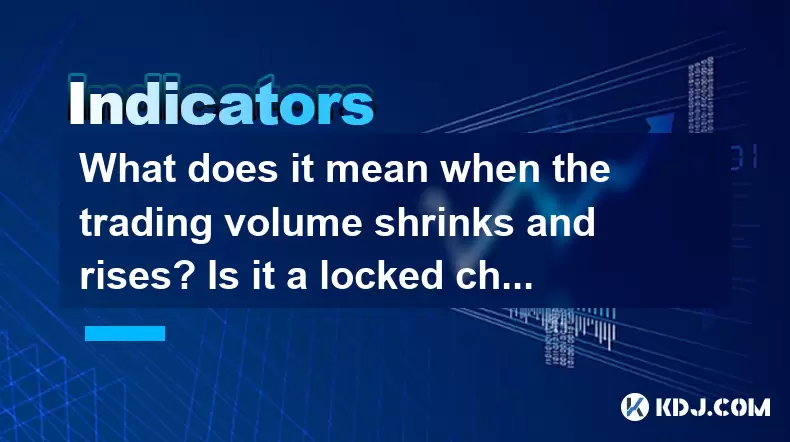
Understanding Trading Volume in Cryptocurrency Markets
In the world of cryptocurrencies, trading volume plays a crucial role in understanding market dynamics. Trading volume refers to the total number of coins or tokens that have been traded within a specific period. When we talk about trading volume shrinking or rising, we are looking at the changes in this total number over time. This article will delve into what these changes signify and whether they indicate locked chips or insufficient momentum.
What Does Shrinking Trading Volume Mean?
When trading volume shrinks, it means fewer coins or tokens are being exchanged on the market. Shrinking trading volume can be an indicator of several market conditions. One possibility is that the market is entering a consolidation phase, where traders are holding onto their assets rather than actively trading them. This can suggest that the market is stabilizing after a period of volatility.
Another interpretation of shrinking volume is that there might be insufficient momentum in the market. When there is less interest from traders, the volume naturally decreases. This can be a sign that the market is losing its bullish or bearish drive, and traders are waiting for new developments or catalysts before making significant moves.
However, shrinking volume does not necessarily mean that the market is in a state of locked chips. Locked chips refer to a situation where a large portion of the circulating supply is held by long-term holders and not available for trading. While shrinking volume could be a symptom of this, it is not the sole indicator. Other factors, such as on-chain metrics and holder distribution, are needed to confirm whether chips are indeed locked.
What Does Rising Trading Volume Mean?
Conversely, when trading volume rises, it indicates increased activity in the market. Rising trading volume often signals heightened interest and participation from traders. This can be due to significant news, market events, or shifts in sentiment that prompt more buying and selling.
Rising volume can be a sign of strong momentum in the market. When more traders are actively participating, it can lead to increased price volatility and potentially larger price movements. This is particularly true if the volume increase is accompanied by a clear directional trend in the price.
However, rising volume does not always mean that the market has insufficient momentum. On the contrary, it can indicate that the market is gaining momentum and that traders are more engaged. The context of the volume increase, such as whether it is driven by positive or negative news, is crucial in determining its impact on market momentum.
Analyzing Volume in Conjunction with Price Movements
To accurately interpret the significance of trading volume, it is essential to analyze it in conjunction with price movements. Volume and price analysis can provide a more comprehensive view of market conditions.
For instance, if the price is rising and the volume is increasing, it suggests strong bullish momentum. Traders are buying more aggressively, which can drive the price higher. Conversely, if the price is falling and the volume is increasing, it indicates strong bearish momentum, with more traders selling and pushing the price down.
On the other hand, if the price is rising but the volume is shrinking, it might suggest weakening bullish momentum. The price increase is not supported by strong trading activity, which could indicate that the upward trend might not be sustainable. Similarly, if the price is falling but the volume is shrinking, it could signal weakening bearish momentum, with fewer traders participating in the sell-off.
Volume Indicators and Tools
Traders often use various volume indicators and tools to help them analyze market conditions. Some of the most common volume indicators include:
- Volume Oscillator: This indicator measures the difference between two moving averages of volume. It helps identify trends in volume and can signal potential changes in market momentum.
- On-Balance Volume (OBV): OBV is a cumulative indicator that adds volume on up days and subtracts volume on down days. It helps confirm price trends and can signal potential reversals.
- Volume Profile: This tool displays the amount of trading activity at different price levels over a specified period. It can help identify key support and resistance levels based on volume.
Using these tools, traders can gain a deeper understanding of how volume is influencing market dynamics and make more informed trading decisions.
Case Studies: Volume Analysis in Real-World Scenarios
To illustrate how volume analysis can be applied in real-world scenarios, let's look at a couple of case studies from the cryptocurrency market.
Case Study 1: Bitcoin (BTC) Price Surge
In early 2021, Bitcoin experienced a significant price surge, reaching new all-time highs. During this period, trading volume also increased dramatically. The rising volume confirmed the strong bullish momentum behind the price increase, as more traders were actively participating in the market. This high volume was a clear indicator that the market had strong momentum and was not suffering from insufficient momentum.
Case Study 2: Ethereum (ETH) Consolidation Phase
In mid-2022, Ethereum entered a consolidation phase after a period of volatility. During this time, trading volume began to shrink. The shrinking volume suggested that the market was stabilizing, and traders were holding onto their assets rather than actively trading them. While this could be interpreted as a sign of insufficient momentum, it was more indicative of a market in a consolidation phase rather than one with locked chips.
Frequently Asked Questions
Q: Can trading volume alone predict future price movements?
A: Trading volume alone cannot predict future price movements with certainty. It is one of many indicators that traders use to analyze market conditions. Volume should be considered in conjunction with price trends, market sentiment, and other technical indicators to make more informed predictions.
Q: How can I use volume analysis to improve my trading strategy?
A: To improve your trading strategy using volume analysis, you can incorporate volume indicators such as the Volume Oscillator, On-Balance Volume, and Volume Profile into your technical analysis. These tools can help you confirm price trends, identify potential reversals, and pinpoint key support and resistance levels based on trading activity.
Q: Is high trading volume always a good sign for a cryptocurrency?
A: High trading volume is not always a good sign for a cryptocurrency. While it can indicate strong market interest and momentum, it can also be associated with high volatility and potential price manipulation. The context of the volume increase, such as whether it is driven by positive or negative news, is crucial in determining its impact on the market.
Q: What other factors should I consider alongside trading volume when analyzing a cryptocurrency?
A: When analyzing a cryptocurrency, you should consider other factors such as price trends, market sentiment, on-chain metrics, and fundamental analysis alongside trading volume. These factors can provide a more comprehensive view of the market and help you make more informed trading decisions.
Disclaimer:info@kdj.com
The information provided is not trading advice. kdj.com does not assume any responsibility for any investments made based on the information provided in this article. Cryptocurrencies are highly volatile and it is highly recommended that you invest with caution after thorough research!
If you believe that the content used on this website infringes your copyright, please contact us immediately (info@kdj.com) and we will delete it promptly.
- Gold prices rose in the Asian trading session on Thursday
- 2025-06-07 06:40:15
- What is Core (CORE) ?
- 2025-06-07 06:40:15
- Flip a $1,000 Investment Into $90,000: These 4 High-Growth Tokens May Surpass Solana (SOL) and Ripple (XRP) in 3 Months
- 2025-06-07 06:35:12
- Bitcoin is closing in on $100,000 after US President Donald Trump teased a major trade deal
- 2025-06-07 06:35:12
- Rushi Manche's Dismissal as Movement Labs CEO Has Shaken the Blockchain Industry
- 2025-06-07 06:30:14
- Remittix's PayFi Ecosystem Might Just Possess Better Benefits Than SOL's Scalable Network
- 2025-06-07 06:30:14
Related knowledge
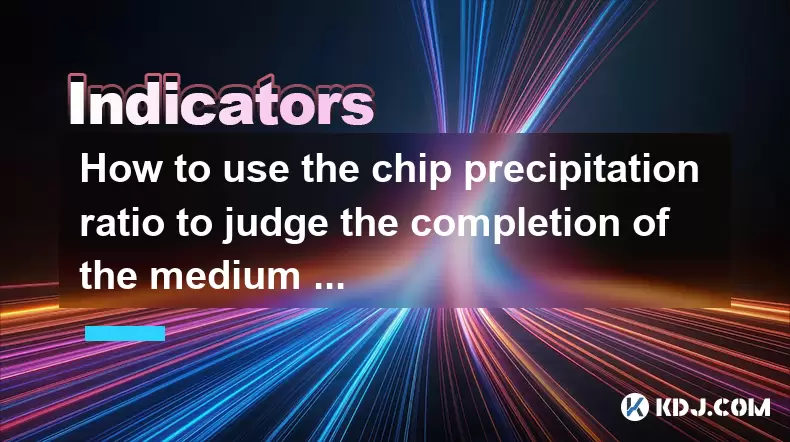
How to use the chip precipitation ratio to judge the completion of the medium and long-term bottom construction?
Jun 04,2025 at 03:36am
The chip precipitation ratio is a crucial metric used by investors to assess the accumulation of chips (or shares) at different price levels over time. This ratio helps in understanding the distribution of chips and can be a powerful tool for determining the completion of medium and long-term bottom construction in the cryptocurrency market. By analyzin...
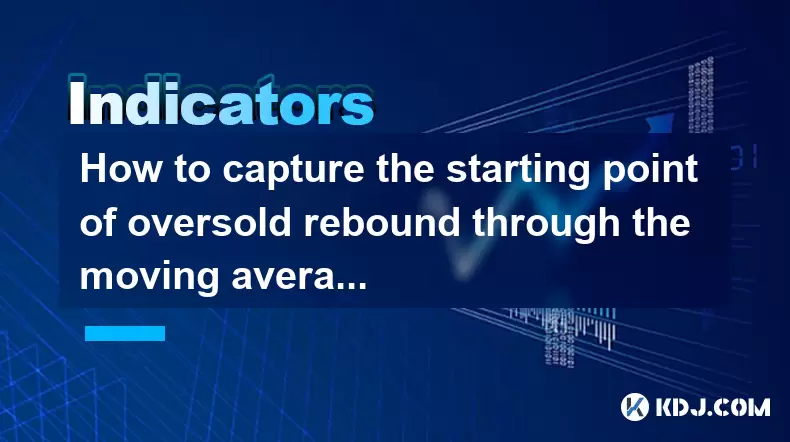
How to capture the starting point of oversold rebound through the moving average gravity reversal strategy?
Jun 04,2025 at 01:01pm
The moving average gravity reversal strategy is a sophisticated approach used by traders to identify potential entry points for buying cryptocurrencies when they are considered oversold. This strategy leverages the concept of moving averages to pinpoint moments when a cryptocurrency might be poised for a rebound. In this article, we will delve into the ...
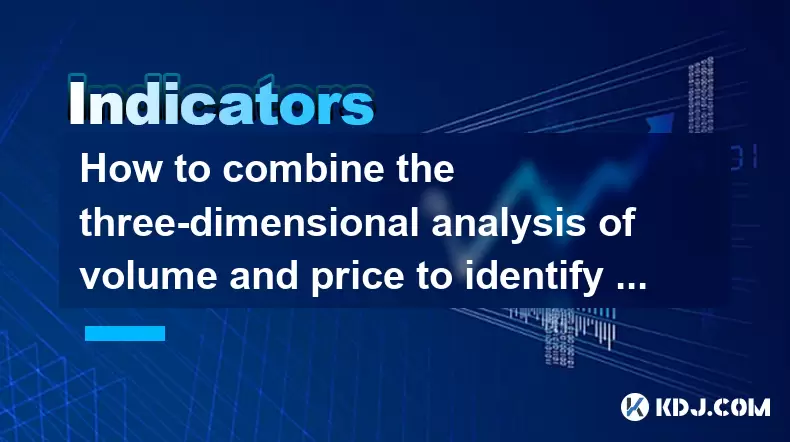
How to combine the three-dimensional analysis of volume and price to identify the golden buying point of breakthrough and retracement?
Jun 03,2025 at 11:42pm
In the dynamic world of cryptocurrencies, identifying the optimal buying points is crucial for maximizing profits and minimizing risks. One effective method to achieve this is by combining three-dimensional analysis of volume and price to pinpoint the golden buying points during breakouts and retracements. This article will delve into how to use this ap...
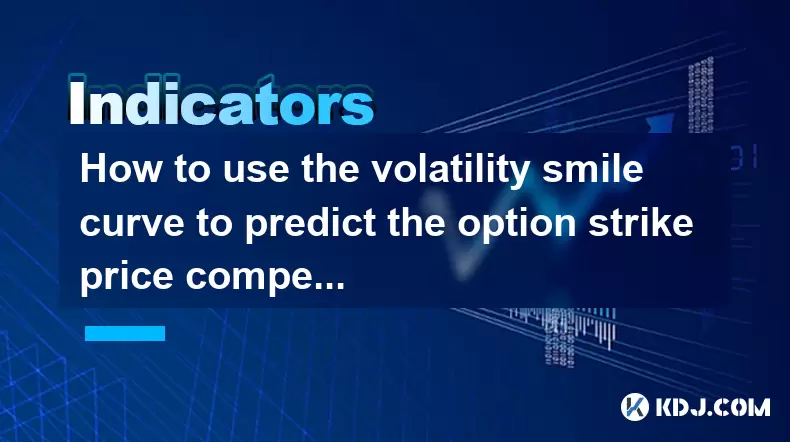
How to use the volatility smile curve to predict the option strike price competition area?
Jun 06,2025 at 01:01pm
The volatility smile curve is a graphical representation that shows the implied volatility of options across different strike prices for a given expiration date. It is called a 'smile' because the curve often takes the shape of a smile, with higher implied volatilities for options that are deep in-the-money or deep out-of-the-money, and lower implied vo...
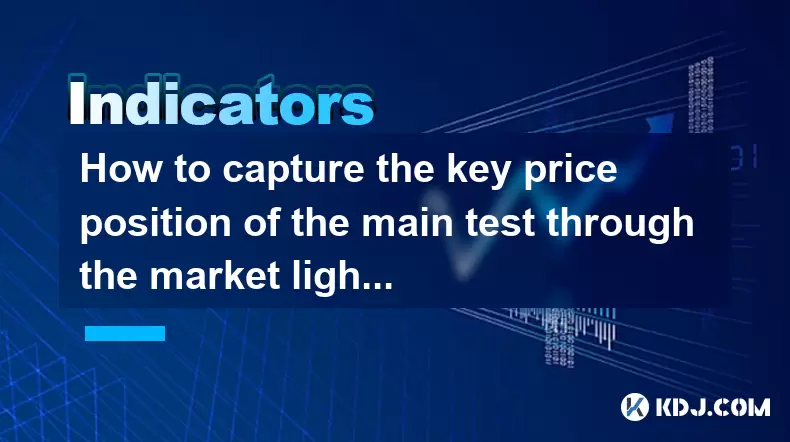
How to capture the key price position of the main test through the market lightning chart?
Jun 02,2025 at 06:07pm
Introduction to Market Lightning ChartThe market lightning chart is a powerful tool used by cryptocurrency traders to visualize price movements and identify key price positions. This chart type provides a detailed view of market activity, allowing traders to spot trends, reversals, and other significant price levels quickly. By understanding how to use ...
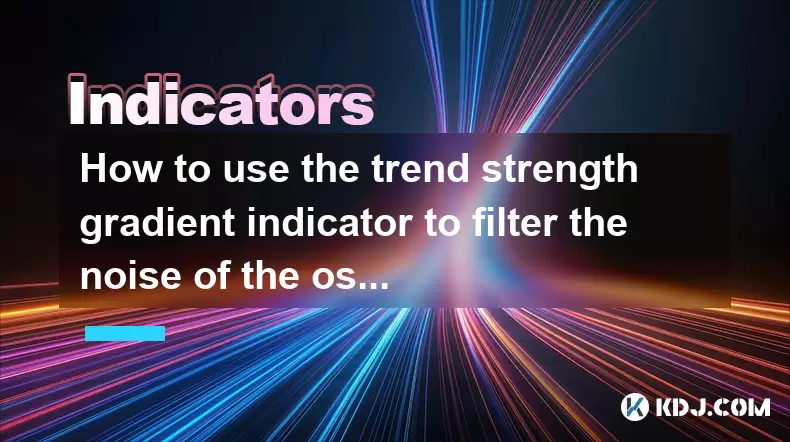
How to use the trend strength gradient indicator to filter the noise of the oscillating market?
Jun 06,2025 at 06:15pm
The trend strength gradient indicator is a powerful tool used by cryptocurrency traders to analyze market trends and filter out the noise that often accompanies oscillating markets. This indicator helps traders identify the strength of a trend, enabling them to make more informed decisions. In this article, we will explore how to effectively use the tre...

How to use the chip precipitation ratio to judge the completion of the medium and long-term bottom construction?
Jun 04,2025 at 03:36am
The chip precipitation ratio is a crucial metric used by investors to assess the accumulation of chips (or shares) at different price levels over time. This ratio helps in understanding the distribution of chips and can be a powerful tool for determining the completion of medium and long-term bottom construction in the cryptocurrency market. By analyzin...

How to capture the starting point of oversold rebound through the moving average gravity reversal strategy?
Jun 04,2025 at 01:01pm
The moving average gravity reversal strategy is a sophisticated approach used by traders to identify potential entry points for buying cryptocurrencies when they are considered oversold. This strategy leverages the concept of moving averages to pinpoint moments when a cryptocurrency might be poised for a rebound. In this article, we will delve into the ...

How to combine the three-dimensional analysis of volume and price to identify the golden buying point of breakthrough and retracement?
Jun 03,2025 at 11:42pm
In the dynamic world of cryptocurrencies, identifying the optimal buying points is crucial for maximizing profits and minimizing risks. One effective method to achieve this is by combining three-dimensional analysis of volume and price to pinpoint the golden buying points during breakouts and retracements. This article will delve into how to use this ap...

How to use the volatility smile curve to predict the option strike price competition area?
Jun 06,2025 at 01:01pm
The volatility smile curve is a graphical representation that shows the implied volatility of options across different strike prices for a given expiration date. It is called a 'smile' because the curve often takes the shape of a smile, with higher implied volatilities for options that are deep in-the-money or deep out-of-the-money, and lower implied vo...

How to capture the key price position of the main test through the market lightning chart?
Jun 02,2025 at 06:07pm
Introduction to Market Lightning ChartThe market lightning chart is a powerful tool used by cryptocurrency traders to visualize price movements and identify key price positions. This chart type provides a detailed view of market activity, allowing traders to spot trends, reversals, and other significant price levels quickly. By understanding how to use ...

How to use the trend strength gradient indicator to filter the noise of the oscillating market?
Jun 06,2025 at 06:15pm
The trend strength gradient indicator is a powerful tool used by cryptocurrency traders to analyze market trends and filter out the noise that often accompanies oscillating markets. This indicator helps traders identify the strength of a trend, enabling them to make more informed decisions. In this article, we will explore how to effectively use the tre...
See all articles

























































































